Wondermondo 🢖 World 🢖 Wonders of South America 🢖 Wonders of Paraguay
Territory
Wonders of Paraguay
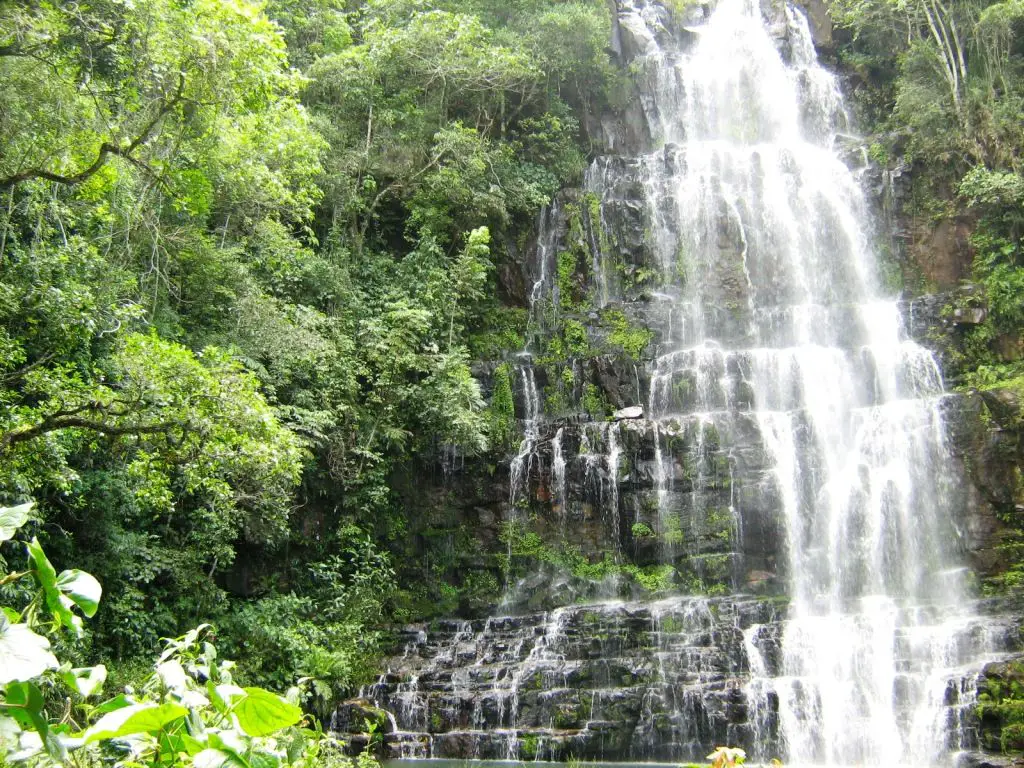
 Highlights
Highlights
The most impressive and interesting landmarks in Paraguay are:
- Waterfalls – the beautiful, wide Monday Falls and Ñacunday Falls belong to the most impressive natural landmarks in the country.
- Ruins of Jesuit missions – just like in the neighboring regions of Argentina and Brazil, in Paraguay have been preserved ruins of Jesuit missions. Back in the 18th century, these were ornate, unusual, and impressive buildings.
- Petroglyphs – in South America exist thousands of petroglyph sites but some in Paraguay have special fame. In such sites as Ita Letrá and Gasory rock shelter, the petroglyphs resemble some ancient, undeciphered writing. This has given birth to some pseudoscientific theories about ancient Vikings or Celts coming here.
Map with the described wonders
If you see this after your page is loaded completely, leafletJS files are missing.
 Top 25 wonders of Paraguay
Top 25 wonders of Paraguay
Geological wonders
Nacunday Falls (Salto Ñacunday)
Alto Paraná
Magnificent waterfall – “Niagara of Paraguay”. This waterfall is 40 m tall and 110 m wide and is located in a scenic, forested area.
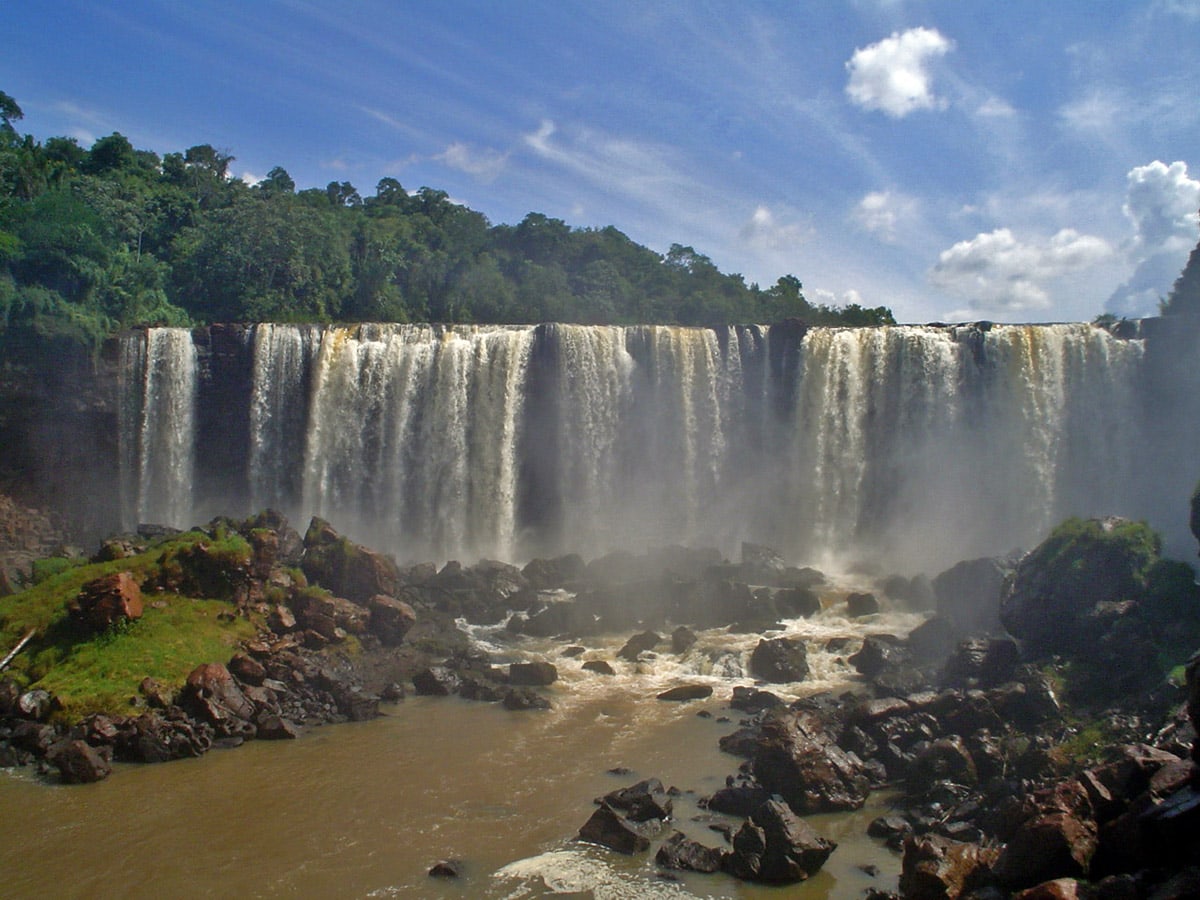
Monday Falls (Saltos del Monday)
Alto Paraná
Waterfall on the powerful Monday River, approximately 45 m tall and 120 m wide.
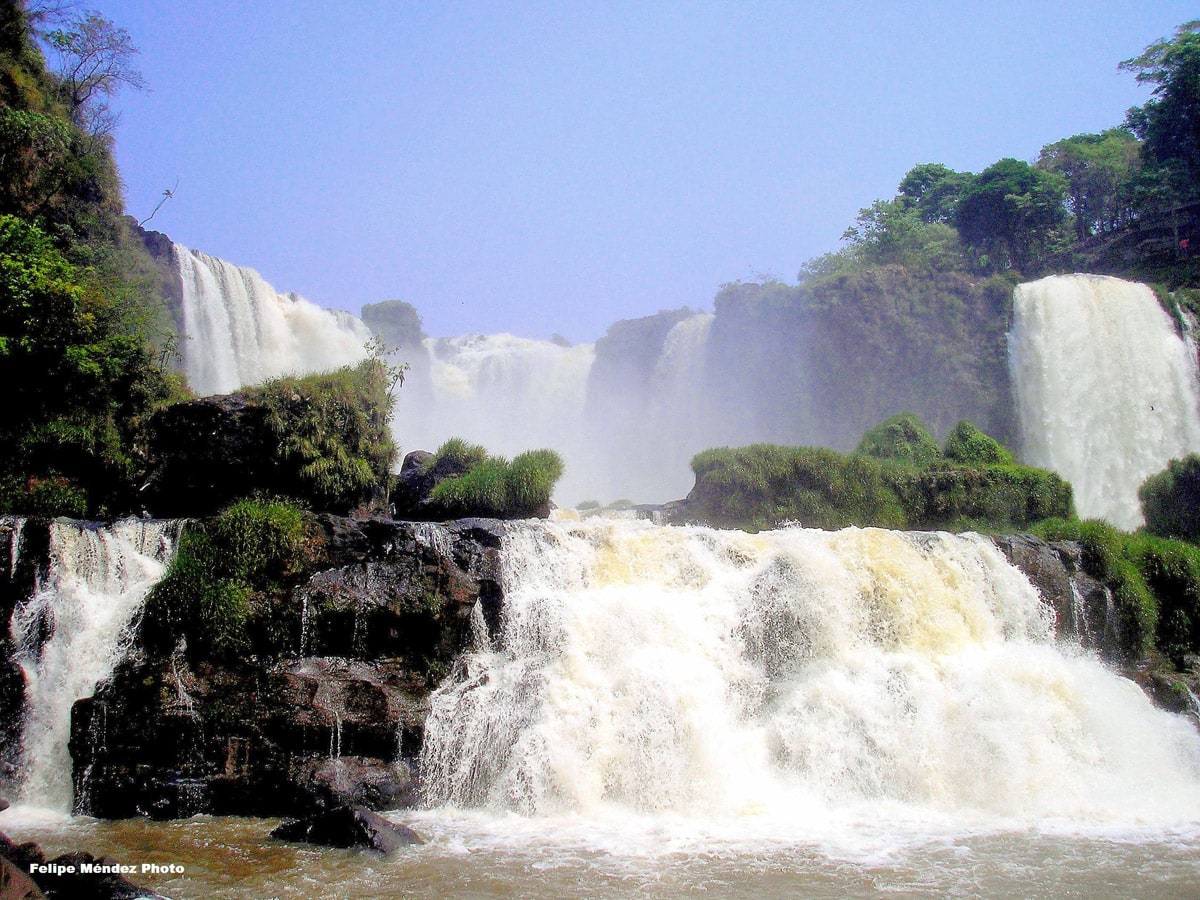
Aguaray Guazu Falls
Guairá
Free falling, 58 m tall waterfall.
Suizo Falls
Guairá
62 m tall, free-falling waterfall, the tallest in Paraguay.
Ojo del Mar
Amambay
Small lake in the middle of a pristine forest. According to legends, this lake has no bottom and people should not swim here, otherwise, some mysterious force would swallow them.
Cerro Koi and Cerro Chorori
Central (Paraguay)
Sandstone outcrops. Here the sandstone is fractured into hexagonal columns.
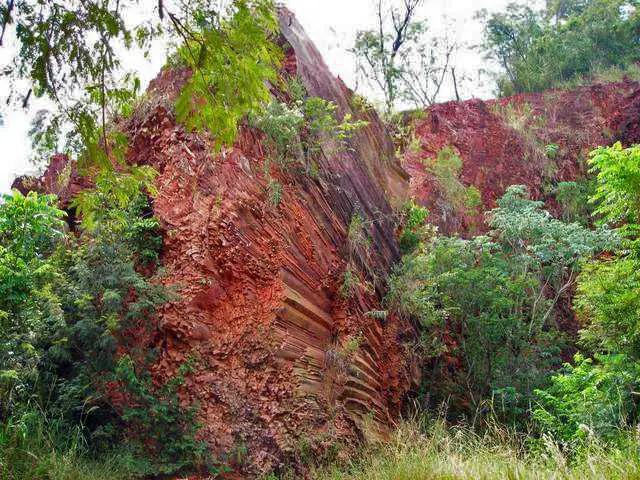
San Lázaro Caves, Vallemí
Concepción
Group of interesting caves with stalactites and other cave formations.
Caverna Kamba Hopo
Concepción
An impressive grotto – the cave at the bank of the Paraguay River.
Carapa Falls
Guairá
Approximately 50 m tall cascades with numerous small steps, located in an impressive jungle setting. Located in the primeval Mbaracayú Forest – the remnant of the Interior Atlantic Forest.
Archaeological wonders
Ita Letrá
Guairá
A cliff with mysterious petroglyphs that resemble a message in unknown writing. A site of legends.
Fernández rock shelter
Guairá
Prehistoric rock shelter with petroglyphs.
Gasory rock shelter
Amambay
Prehistoric rock shelter with petroglyphs that resemble mysterious writings.
Cerro Acuá petroglyph site
Amambay
A prehistoric petroglyph site where, as it seems, are depicted male and female genitalia. In Cerro Corá National Park are located many other sites with prehistoric petroglyphs.
Architecture wonders
Itaipu Dam
Alto Paraná
The largest hydropower plant in the world by the capacity of the annual production of electricity, with an installed capacity of generators – 14 GW. Dam is 7.7 km long and 196 m high and belongs to the largest man-made structures in the world, built in 1984.
San Buenaventura Church, Yaguarón
Paraguarí
A Franciscan church with beautiful, ornate woodcarvings, constructed in 1640 – 1700.
Palacio de los López
Asunción
Magnificent government building in Neo-Classical style, constructed in 1857 – 1867. Built as a private residence – a palace for Francisco Solano Lopez Carrillo, the second president of Paraguay.
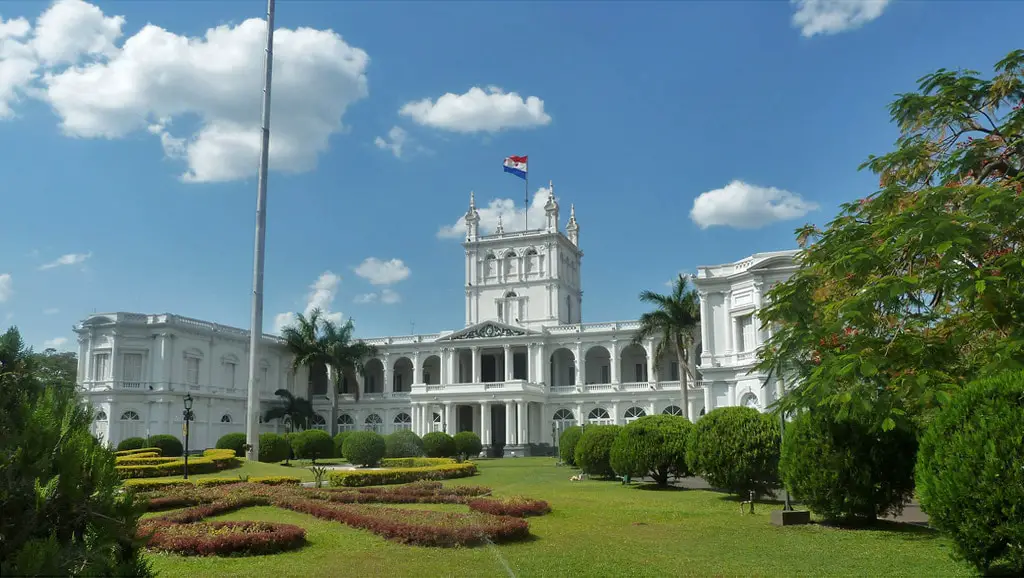
Santos Cosme y Damián Jesuit mission
Itapúa
Ruins of an unfinished church and several more buildings of Jesuitic mission that was moved to the present location in 1740. The church is used now as well.
Mision de Jesús de Tavarangué
Itapúa
Ruins of a Jesuit mission moved to its present site sometime around 1690.
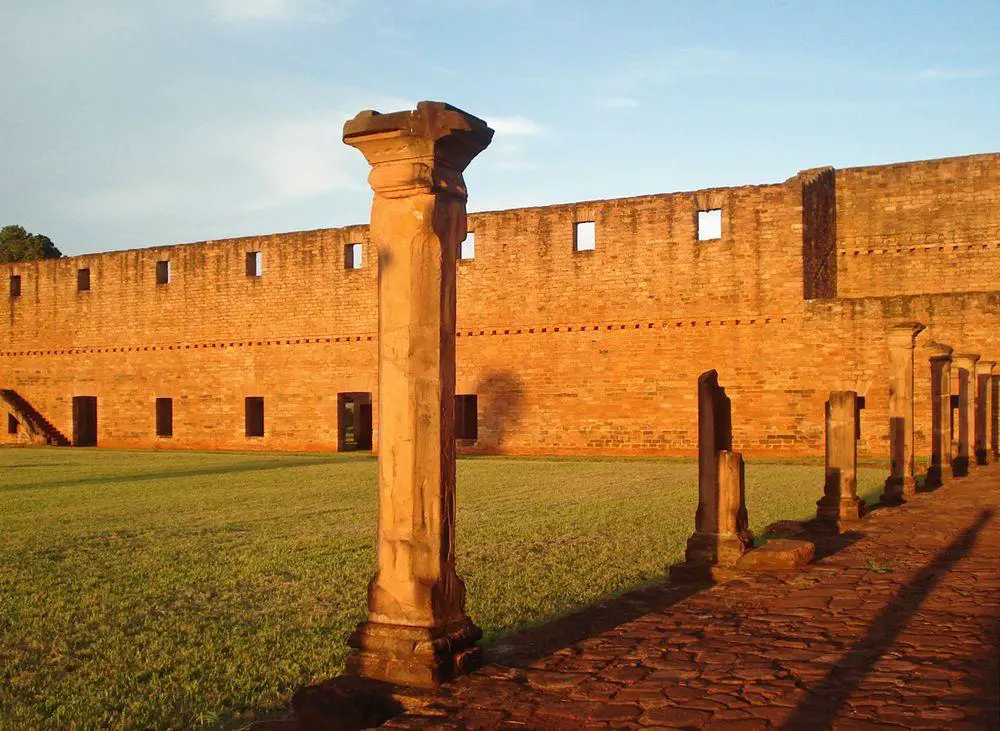
Friendship Bridge (Ponte da Amizade)
Alto Paraná
This 552.4 m long road bridge has an enormous arch whose span is 290 m. Constructed in 1960 – 1965.
Panteón Nacional de los Héroes (National Pantheon of Heroes)
Asunción
The construction of this Neo-Classicism building started in 1863 (intended as a chapel) but was finished only in 1936. Now it serves as a memorial site.
La Santísima Trinidad de Paraná
Itapúa
Ruins of the largest of the 8 historical Jesuit missions in Paraguay, a regional capital. This mission was built in 1706 and had a nice church with rich decoration and a complex of other buildings.
Castillo Carlota Palmerola
Central (Paraguay)
An ornate mansion in Neo-Gothic style, built by the Palmerola Ayala family in 1897.
Manzana de la Rivera
Asunción
This historical city district now serves as a cultural district of the capital of Paraguay. Includes nine historical buildings, where the oldest is Viola House from 1750 – 1758.
 Recommended books
Recommended books
At the Tomb of the Inflatable Pig: Travels Through Paraguay
Haven to Nazis, smugglers’ paradise, home to some of the earth’s oddest wildlife and most baroquely awful dictatorships, Paraguay is a nation waiting for the right chronicler. In John Gimlette, at last, it has one. With an adventurer’s sang-froid, a historian’s erudition, and a sense of irony so keen you could cut a finger on it, Gimlette celebrates the beauty, horror, and–yes–charm of South America’s obscure and remote “island surrounded by land.”
Paraguay (Bradt Travel Guide)
The new edition of the first and still most comprehensive guidebook to Paraguay in English is engagingly written by a long-term resident. Paraguay is an emerging tourist destination, rapidly improving its facilities but still mercifully free from tourist tat. You can explore savannahs dotted with palm trees, red-earth roads, empty river-beaches, damp Atlantic forests, or the wild Chaco’s ‘green desert’, all without running into another foreigner. You can swing in a hammock chugging slowly upriver and enjoy some of the best bird-watching in the world. Folk dance, harp playing, and handicraft – particularly in sewing – are vibrant, living traditions.


